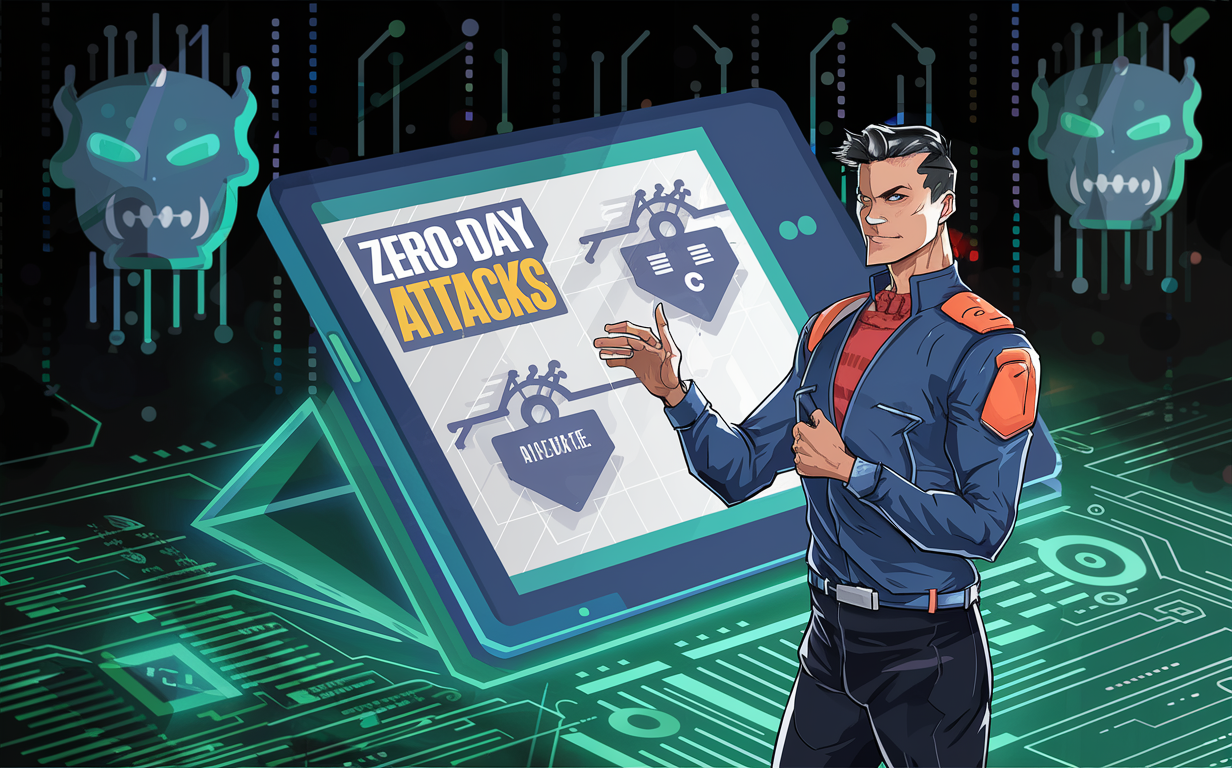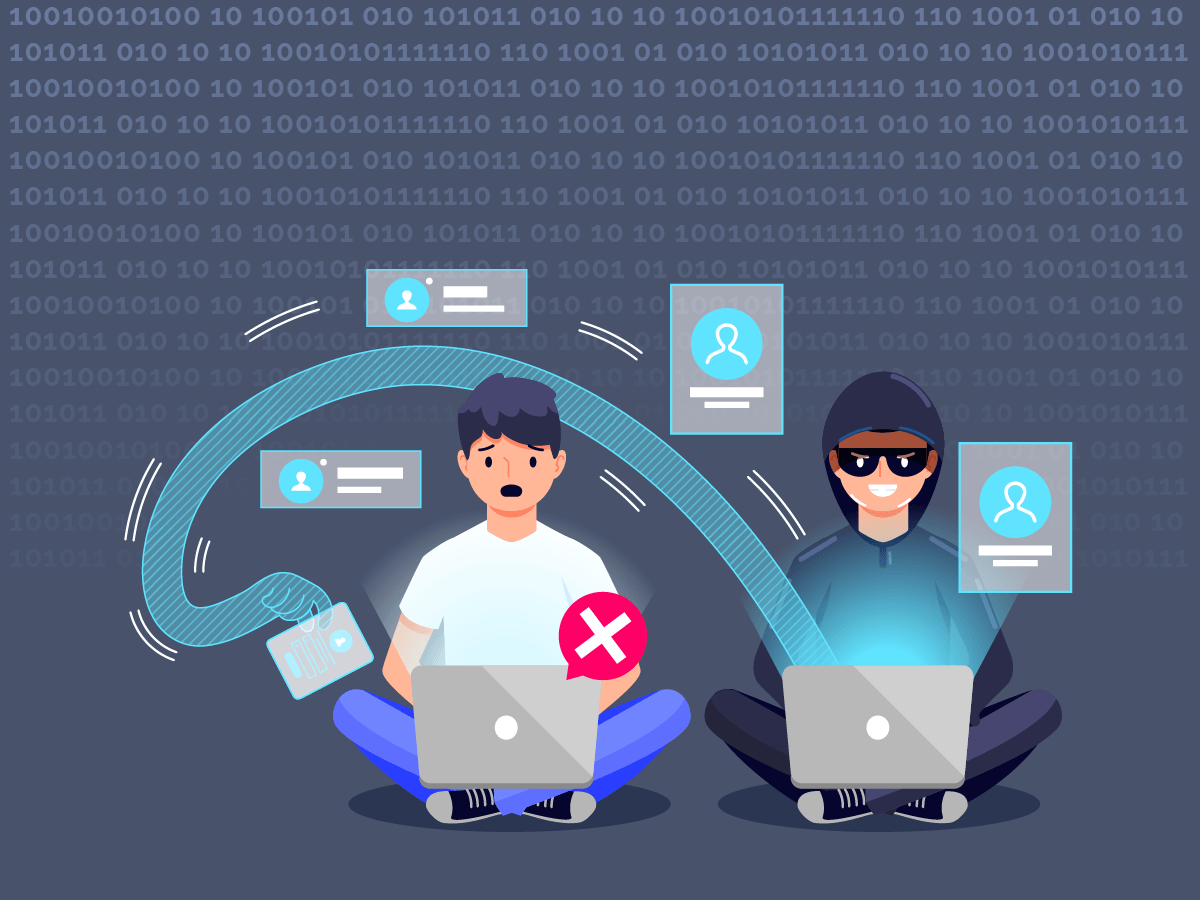
Introduction
Zero-day attacks, one of the most challenging cyber attacks to mitigate and prevent, represent a critical and ever-present threat in the digital world.
The impact of zero-day attacks on cybersecurity is significant and far-reaching. They can lead to data breaches and compromising sensitive information of millions of users. Businesses can suffer severe financial losses due to downtime, legal liabilities and damaged reputation.
On a broader scale, zero-day exploits can be used in cyber warfare, targeting critical infrastructure and threatening national security.
Understanding Zero-Day Attacks

Zero-Day attacks target previously unknown vulnerabilities in software or system and exploit the flaws for which no patch or fix has been released, hence the term 'zero-day.' This necessitates zero-day exploit prevention as a critical strategy.
When an attack happens on an unknown issue in the system or software, it gives the developer no time to fix it as it was not known until the attack occurred. The term "zero-day" refers to the fact that the vendor had zero days to fix the issue. The lifecycle of a zero-day attack can be broken down into several stages highlighting the importance of zero-day exploit prevention at each phase:
- Discovery
- Exploit Development
- Attack Launch
- Detection
- Vendor Response
- Patch Deployment
- Post-Mortem Analysis
Types of Zero-Day Attacks
Zero-day attacks come in various forms, each targeting different aspects of digital systems. Understanding these types can help organisations and individuals better prepare and protect themselves against potential threats.
Software Exploits - These zero-day attacks target unknown flaws in software applications, including operating systems, office applications and even security software. Attackers exploit these vulnerabilities to execute harmful code, steal data or take control of affected systems.
These zero-day attacks target unknown flaws in software applications, including operating systems, office applications and even security software. Attackers exploit these vulnerabilities to execute harmful code, steal data or take control of affected systems.
Web Browser Exploits -  Web browsers are a common target for zero-day exploits due to their widespread use and access to valuable data. These exploits take advantage of vulnerabilities within the browser software to steal login credentials, install malware without the user's knowledge or gain unauthorised access to the user's system.
Web browsers are a common target for zero-day exploits due to their widespread use and access to valuable data. These exploits take advantage of vulnerabilities within the browser software to steal login credentials, install malware without the user's knowledge or gain unauthorised access to the user's system.
Network Exploits -  Network exploits target vulnerabilities in the network backbone, such as routers, switches and firewalls. These zero-day attacks aim to breach network security, allowing attackers to intercept, manipulate or reroute data.
Network exploits target vulnerabilities in the network backbone, such as routers, switches and firewalls. These zero-day attacks aim to breach network security, allowing attackers to intercept, manipulate or reroute data.
Supply Chain Attacks -  Supply chain attacks compromise the software supply chain. This can involve inserting malicious code into legitimate software updates or compromising development tools to distribute malware indirectly.
Supply chain attacks compromise the software supply chain. This can involve inserting malicious code into legitimate software updates or compromising development tools to distribute malware indirectly.
Preventing Zero-Day Attacks
Zero-day exploit prevention requires a broad approach, combining proactive measures, vigilance and education. By understanding and implementing these strategies, organisations and individuals can greatly decrease their risk from these unexpected threats.
Proactive measures 
These measures include conducting regular security audits, threat modelling and penetration testing to identify and reduce potential vulnerabilities before they can be exploited.
Regular updates - Software vendors often release patches in response to discovered vulnerabilities. By promptly applying these patches, organisations can close the window of opportunity for attackers to exploit these flaws.
Advanced threat detection systems -  This include intrusion detection systems (IDS), intrusion prevention systems (IPS) and security information and event management (SIEM) solutions which analyse network traffic and system behaviour to identify patterns that could signify an attack.
This include intrusion detection systems (IDS), intrusion prevention systems (IPS) and security information and event management (SIEM) solutions which analyse network traffic and system behaviour to identify patterns that could signify an attack.
Access controls - Access controls ensure that users have only the necessary permissions to perform their job functions, reducing the potential impact of compromised accounts.
Educating users -  By educating users about the importance of strong passwords, recognising phishing attempts and exercising caution when downloading files or clicking on links, organisations can reduce the risk of successful exploits.
By educating users about the importance of strong passwords, recognising phishing attempts and exercising caution when downloading files or clicking on links, organisations can reduce the risk of successful exploits.
Advanced Prevention Techniques
Advanced zero-day exploitation prevention techniques are essential components of a solid cybersecurity strategy, particularly in the context of defending against zero-day attacks. Here’s how they can strengthen an organisation's cyber defences:
Sandboxing -  Sandboxing is a security technique that involves running code, programs or files in a separate, secure environment to detect suspicious behaviour without risking the main system's security. This isolated environment mimics the end-user operating environment but is quarantined from the rest of the network and systems.
Sandboxing is a security technique that involves running code, programs or files in a separate, secure environment to detect suspicious behaviour without risking the main system's security. This isolated environment mimics the end-user operating environment but is quarantined from the rest of the network and systems.
Threat intelligence - This involves collecting and analysing information about emerging or existing threats and cyberattacks. This intelligence can provide early warning signs of zero-day exploits by identifying new vulnerabilities, attack patterns and threat actors’ tactics.
Regular security audits - Regularly security audits ensure that potential entry points for attackers are minimised and that security measures are kept up-to-date in response to evolving threats.
Conclusion

The journey of limiting the zero-day vulnerability and ensuring zero-day exploit prevention relies on the principles of vigilance and proactivity. Vigilance includes constant monitoring and awareness of the threat landscape, recognising that zero-day vulnerabilities present a unique challenge due to their previously unknown nature. Proactive measures, on the other hand, involve implementing advanced security protocols before an attack occurs. These include updating and patching software regularly, using advanced detection systems and adopting security best practices.
Continuous education ensures that cybersecurity professionals and users are aware of the latest threats and the best practices for reducing them. Also, investment in cybersecurity through financial resources, time in research, development and collaboration is helpful. Ultimately, promoting a culture of continuous learning and investment in cybersecurity is essential for adapting to this threat environment and protecting ourselves against the attacks of tomorrow.





